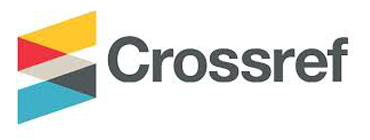THE EFFECTIVENESS OF USING NATURE ANIMAL DOCUMENTARY VIDEO ON STUDENT’S ABILITY IN LEARNING VOCABULARY AT ELEVENTH GRADE
Abstract
The aim of this research is to find out the effect of using nature animal documentary video on students’ ability in Learning Vocabulary at tenth grade students of Mas Darul Qura’an Amplas. In this research, the researcher use the quantitative research with the a quasi-exprimental design.The sample of the research was 50 students. There are 25 students from MIA-2 as exprimental class and there are 25 students from IIS-1 as control class. The writer teach the experimental group by using nature animal documentary video and the control class without using nature animal documentary video. In control class, the researcher used the media ppt. The result of the research was significant with the average scores of exprimental class were 55,6 for the pre-test and 81 for the post-test, then the average scores for the control class were 53,4 for the pre-test and 74,8 for the post-test. The researcher found that the mean scores in the exprimental class was higher than the control class scores (81> 74,8). The t-test results also shows that t-observed (2,8) was higher than t- table at a significance level of 5% (0,05) with 48 degrees of freedom of 2,063. The result of the calculation showed that the statistic data of both showed that t-observed was higher than t-table (2,8 > 2,063 p = 0.05). It means that Null Hypothesis (Ho) was rejected and Alternative Hypothesis (Ha) was accepted. The calculation was showed that there is a significant effect of using animal documentary video on student’s ability in learning vocabulary.
Keywords : Vocabulary, Student’s Ability and Nature Animal Documentary Video.
Full Text:
PDFReferences
Albert Brance, 1964, Psychology of Educational, (New York: Cambridge University Press) Andrew Garth, 2008, Analysis Data Using SPSS A Practical Guide for Those Unfortunate Enough to Have to Actually Do It, (Sheffield : Hallam University)
A. S. Hornby, 1987, Oxford Advanced Learner Dictionary, (NY: Oxford University Press) Betul Bal-Gezegin, 2014, An Investigation of Using Video vs. Audio for Teaching Vocabulary, Procedia - Social and Behavioral Sciences.
Brown, Douglas, 2000, Teaching by Principles; an Interactive Approach Language Pedagogy, (New Jersey: Prentice Hall Regents)
B. R. Hergenhahn and Matthew H. Olson, 2010, Theories of Learning, 7th edition, (Jakarta: Kencana)
Donald Ary, Lucy Cheser Jacobs ,Chris Sorensen and Asghar Razavieh, 2010, Introduction to Research in Education8th edition, (USA : Wadsworth Cengange Learning).
Elaine B. Johnson, 2002, Contextual Teaching and Learning, (California: Corwin Press Inc)
Ephraim Katz, 2012, Documentary The Film Encyclopedia 7th Edition : The Complete Guide to Film and the Film Industry ,(New York : Collins References ), p.604
Geddes and Sturtridge,1982, Video In the Languge Classroom, (London : Heinemann), p.123 Harmer, 2001, The Practice of English Language Teaching. Third edition, (Longman Pearson Education limited).
Hurlock, Elizabeth, 1978,Child Development Sixth Edition, (McGraw Hill Kogakusha, Ltd). Hornby, 1987, Oxford Advanced Learners Dictionary, (New York : Oxford University Press), p.2
Hornby ,2000, Oxford Advanced Learners of Current English,( New York : Oxford University Press), p.43
Jeremy Harmer, The Practice of English Language Teaching
Kemp and Dayton, 1985, Planning and Producing Instructional Media, (New York: Harper & Row Publishers)
Maggs, 2011, Teaching Video Summary Technique to ESL/ EFL Students Miles and Huberman, 1984, p. 16-21
Muhammad Taqi ud-Din & Muhammad Muhsin Khan,1417 H, Translation of the Meaning of the noble Qur’an in the English Language, (Madinah ; King Fahd Complex)
Nawawi, 1988, Tingkat Keberhasilan Siswa di sekolah, (Jakarta : Pusat Pengembangan dan Pembinaan Bahasa)
Newby, Stepich, Lehman, & Russell, 2000, Instructional technology for teaching and learning: Designing instruction, integrating computers, and using media 2nd ed , (Columbus, OH: Prentice-Hall)
Oxford Advanced Learners Dictionary, 1987.
Oxford Learners Pocket Dictionary, 2003 (third edition),(Oxford University Press)
Richards, J. C. & Renandya, W. A, 2002, Methodology in Language Teaching: an Anthology of Current Practice, (Cambridge: Cambridge University Press)
Robert N Singer, 1980, Motor Learning and Movement Behavior, (New York: The Florida State University).
Sheila Currant Bernard, 2007, Documentary Storytelling, Second Edition, ( Burlington : Focal Press), p.2
Smaldino,S. E ,Lowther, D. L, Russel, J.D, 2007, Instructional Technology and Media for Learning 9th. Ed, (New Jersey: Pearson Prentice Hall)
Scott W, Vanderstoep and Deirde D. Johnson, 2009, Research Methods for Everyday Life, (San Fransisco: Jossey -bass, A Wiley Imprint)
Stern, 1983, Fundamental Concepts of Language Teaching: Historical and Interdisciplinary
Perspective on Applied Linguistic Research. Oxford : OPU) , p.18.
Virginia Oakay, 1983, Dictionary of Film and Television Terms, (New York: Barnes & Noble), p.56
Wasti Soemanto, 1283, Psikologi Pendidikan, (Malang: Rineka Cipta)
Refbacks
- There are currently no refbacks.

This work is licensed under a Creative Commons Attribution-NonCommercial-ShareAlike 4.0 International License.
INDEXING
Bright Vision by UIN Sumatera Utara Medan is licensed under a Creative Commons Attribution-NonCommercial-ShareAlike 4.0 International License.
Based on a work at http://jurnaltarbiyah.uinsu.ac.id/index.php/brightvision.









